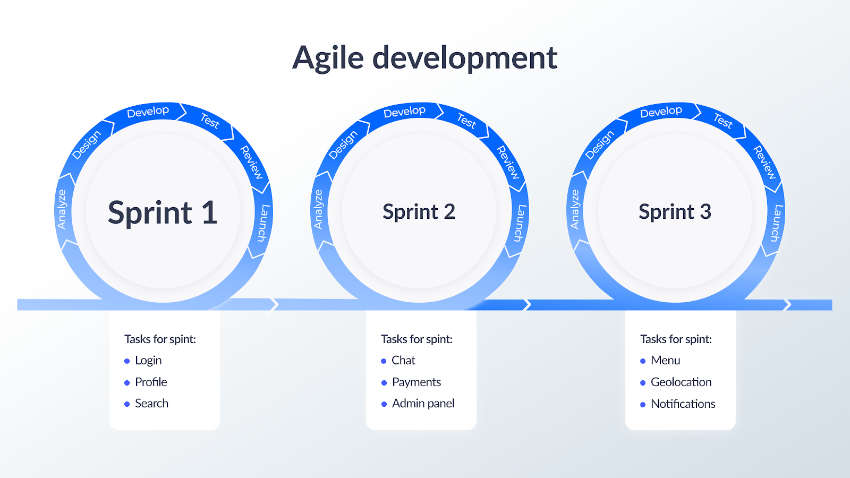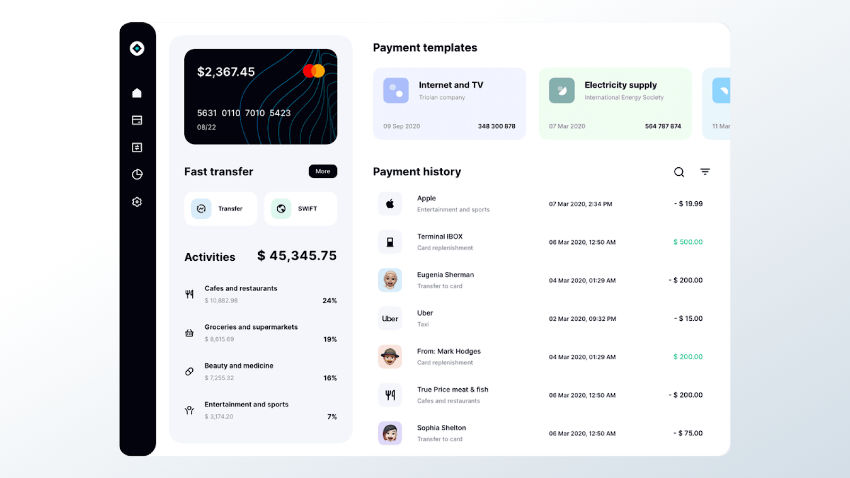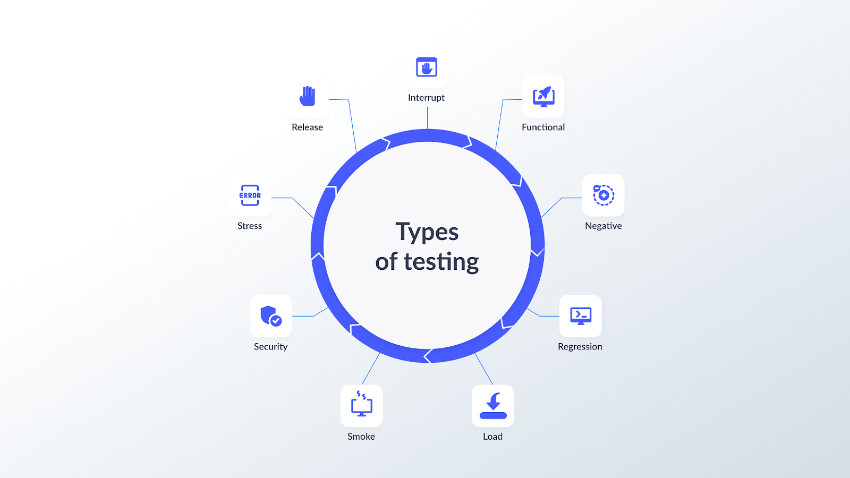Show:
The Utter SDLC Guide: Core Phases Described
Knowing the basic phases of the SDLC is an essential element of quality project implementation. If you are not familiar with this concept, you should learn more about it before you start developing your technical project.

In this article, we will cover this topic, the main SDLC phases, and their features for your broader competence within the future project.
SDLC: Concept and Notion
The software development life cycle (SDLC) stands for the flow utilized within the tech domain to plan, create, implement, and verify the digital product. The SDLC aims to produce high-quality software that meets or exceeds customer expectations, completes work as quickly as possible, and estimates costs.

Describing the classic SDLC, we can distinguish the following phases:
- Requirements gathering
- Research
- UI/UX design
- Software Implementation
- Quality Assurance
- Launching
- Support
A range of widely-applied tech product architecture approaches is also founded on the SDLC phases:
- Waterfall. It refers to the gradual development methodology eliminating the return to the previous step. When your project has transparent and well-defined requirements with no dynamic changes needed, such a flow is a perfect option.
- Scrum. In contrast with the previous approach, this one is relevant for complex and large-scale projects. The process prioritizes the execution of the most significant tasks, moving to the less important ones.
- Agile. This methodology implies completing the phase by phase with short cycles; each lasts a couple of weeks. A client is able to get the final result and ask for edits.

- Kanban. With Kanban, the concentration is kept on the tasks that are currently in the pipeline. Similar to the previous option, developers can make modifications within this methodology.
SDLC: Diving Deeper Into The Phases
Let’s dive deeper into the integral stages of SDLC to understand more in-depth how the project is completed:
1. Requirements for assembling and planning
The planning phase is the most important and critical step in creating a successful system. In this phase, the software development team and the customer decide exactly what needs to be done and implemented, what challenges to overcome, and what are the key purposes of software. Objectives and resources (such as team composition, required expertise, and budget) are also figured out. Alternative methods are explored through meetings with clients, providers, stakeholders, and the team. The analysis also aims at detecting how to make the product better than the competitors.
Next, after researching and analyzing all of the aforementioned details, one of the following ways is selected: develop custom software, renovate existing software, or leave software as is. Besides, the cost of software development is roughly calculated. Communication with the client is key at this phase.
2. Software analysis
It is essential to define the requirements and prepare the documentation covering the pains and needs of the end user – what the expectations are and what methods to execute to implement them. What’s more, a feasibility analysis is performed for the project. Once again, it is vital to maintain an excellent level of connection with customers to figure out if you have a mutual look at the output and its operation. Since the project fulfillment requires the engagement of numerous parties, it’s very important to reach a joint opinion and view.
3. Product design
The phase of designing begins next after a thorough comprehension of the goals the target audience has and an in-depth definition of what exactly you should develop. During this stage, all of the interface components and software elements, such as sections, modules, layout, functionality, and data types that the product processes are compounded in one mockup.

The interface layout of the future product in initial terms may be prepared using conventional pen and paper – the fundamental goal is to show the solution’s functionality and element placement. After that, an expanded, precise design is prepared, considering utterly the functional and technical demands, both logically and physically.
4. Architecture and implementation
Within this step, we already have the absolute document incorporating the demands and specifications. It’s a flow of software implementation when the product design is already entirely finalized. In the whole SDLC, this step covers architecting the script, and the development phase can cover configuration and customization for distinct purposes and features.
When those processes are finished, the product is all set to be downloaded by the audience to be utilized and deliver its capabilities. The final target audience may require onboarding in order to get acquainted with the full list of opportunities and solutions they get with the product. The implementation phase may last a variable quantity of hours – it is determined by the project scale and software complexity.
5. QA testing, integration, and deployment
Here, diverse elements and subsystems are integrated into a coherent tech environment. Diverse input data and research of output, performance, and operation are assembled in the utter product. Testing keeps growing its significance for client experience and satisfaction to deliver a software solution executing its functions flawlessly.

Testing can be performed manually, automatically, or involving both of these methods and the expertise of a dedicated tech team. It is an obligatory phase to assess whether the final product works as it was initially indicated and required.
6. Maintenance and support
This phase refers to regular maintenance of the product and assessment of its performance to upgrade the system and avoid it becoming outdated.
For this, developers execute the following activities:
Changing out-of-date equipment and frequently analyzing the operation
Renovating specific functionality elements to assure that the product complies with valid standards of state-of-the-art solutions and has “immunity” to security danger
The previous list discloses the integral phases of the system development life cycle. However, they are variable for each project.
Key Pitfalls To Be Aware Of Within The SDLC
It’s important to execute each phase properly, and even in this case your team and you can make mistakes that will result in the less qualitative final result:
Insufficient contribution into the planning phase
Analyzing the idea and creating the correct roadmap is the most effective way to fulfill the SDLC properly. Not paying attention to the initial stage results in the lack of risk assessment, comprehensive and precise estimate, and many other issues.
Countless modifications
Many methodologies of SDLC completion allow the team to implement dynamic changes. However, it doesn’t mean that you can make them constantly. By doing this, there’s a high possibility of ruining the business logic and the overall product performance.
Summarize
Software development lifecycle can be completed within the diversity of methodologies. To accomplish this flow effectively, you should apply to a proficient software development vendor, who will pick the right approach for your project and create a thorough implementation pipeline.
About the author:
Vitaly Kuprenko is a writer for Cleveroad. It’s a software development company with headquarters in Ukraine. He enjoys writing about technology and digital marketing.

 Return to Previous Page
Return to Previous Page








